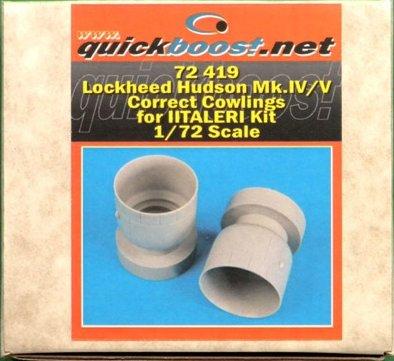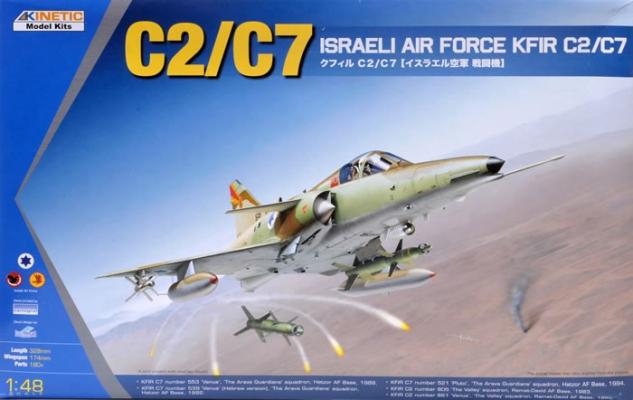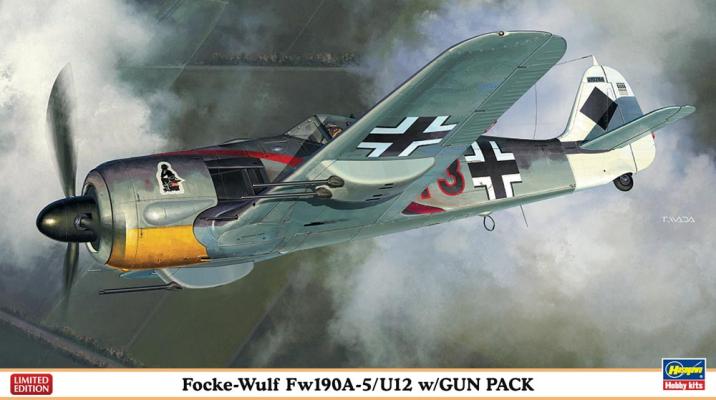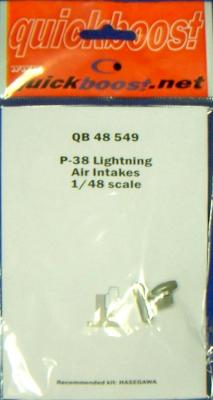Quickboost now offers a pair of resin engine cowlings for the 1/72 scale Italeri Mk.IV/V Hudson kit. The Quickboost cowlings are one-piece moldings that are designed to be drop-in replacements for the kit’s two-piece cowlings. After the engines are attached to the nacelles, the one-piece cowlings simply slide over the engines. There does not appear to be any effort on Quickboost’s part to improve upon the excellent details molded into the kit parts. Instead, the purpose of these replacement cowlings is simply to ease kit construction by avoiding the need to assemble the pieces and clean up the two seams along the centerline of each of the cowlings when the kit parts are used, thus avoiding the need to replace/rescribe details. See the comparison photo below of the Quickboost cowling (on the right) to the Italeri kit’s two-piece cowling parts (on the left).
Welcome to the IPMS/USA Reviews site!
Introduction: The primary organization of the IPMS/USA Review website is by IPMS/USA National Contest Class. Within each Class there are sub-menus by kits, decals, books, etc. The Miscellaneous Class is for items that are not class specific or that cross two or more classes.
IPMS/USA Members: We encourage you to submit reviews, both here and to the Journal. To volunteer for membership in the IPMS/USA "Reviewers Corps" and submit your own reviews, please read the Guidelines For Submitting Product Reviews.
Manufacturers, publishers, and other industry members: IPMS/USA is pleased to offer your company the opportunity for product reviews. All product reviews are performed by IPMS/USA members, and are posted in the publicly-accessible section of our website. With very few exceptions, we perform full build reviews of new kit releases, aftermarket products, and supplies. If you would care to provide product samples for review, please contact John Noack, IPMS/USA 1st VP.
To learn more about IPMS/USA, please see our About Us page.
During WWII, the French could not design a good-looking aircraft to save their nation; however, that changed in the post-war years. The delta wing Mirage series are beautiful aircraft based on delta wing research from Germany. Utilizing the powerful J79 engine the Kfir was a powerful fighter bomber. The C2/C7 had canards for added maneuverability, as well as more powerful avionics.
This is my first Kinetic kit, and I must say upon opening up the sturdy two-piece cardboard box I was impressed by the presentation. The kit is molded with over 180 light grey plastic parts with finely engraved panel lines. Kinetic seems to have captured the looks of the real thing. Besides the two different versions of the aircraft, there are other options – flaps up or down, canopy open or closed, airbrake opened or closed. Then there are the armament options – cluster bombs, Mk-82s, Python air-to-air missiles, fuel tanks, and all the pylons to hold them.
I’ve always loved the look of the Fw-190A-5/U12. Designed with two cannon pods containing two cannons each, it’s one mean machine. For those of us who are old enough to remember, we had the Monogram Fw-190 in the ‘70s, and in that kit they included the gun pods. While not totally accurate, it did make an impression on a little red headed kid. I built it with my kid. Fast forward a few years (okay, so more than a few), and we are blessed with accurate Fw-190s all around, but no U12 versions…until now.
Hasegawa’s Fw-190 kits are easy to build and really accurate. Inside this one, there are five sprues of light grey plastic with no flash or blemishes. The panel lines are recessed and display typical Hasegawa fine quality. Amazingly, the parts count is low at 81 pieces. A sprue of clear is also provided. Some poly caps are included for the prop. This makes a very good A-5 version.
This is without a doubt the best aircraft kit I have ever built. Wingnut Wings has produced an absolute wonder of a kit in this Sopwith Snipe.
Upon opening the sturdy box, one finds six grey sprues, one clear sprue, and a photo etch fret. In addition, there is a very colorful and complete 23-page book of instructions with color photos and actual WW I photos of several Snipes.
To begin, I assembled the cockpit which consists of over 30 parts, not counting the rigging wires. When complete, this is a real gem that should really be displayed alone. It is a shame that it has to be shut up inside the fuselage as not much can be seen once installed. I hope that Wingnut Wings will produce kits of just their cockpits. The instructions for the cockpit are color drawings and color photos of the real cockpit. Can’t beat that.
Next came the 13-piece engine. This also is a real beauty.
The Product
My sample arrived packaged in the familiar orange-topped poly sleeve with the typical card insert. After close inspection of the parts, I found them to be perfect. These little beauties are just what the doctor ordered. They’re a drop-in replacement for the kit parts. They were easily detached from the pour block and cleaned up with a few swipes from my trusty sanding stick. How easy is that?
The Bottom Line
I recommend these babies to anyone wanting to enhance his P-38 build. Thanks to Quickboost and IPMS/USA for the opportunity to review these nice little castings.















